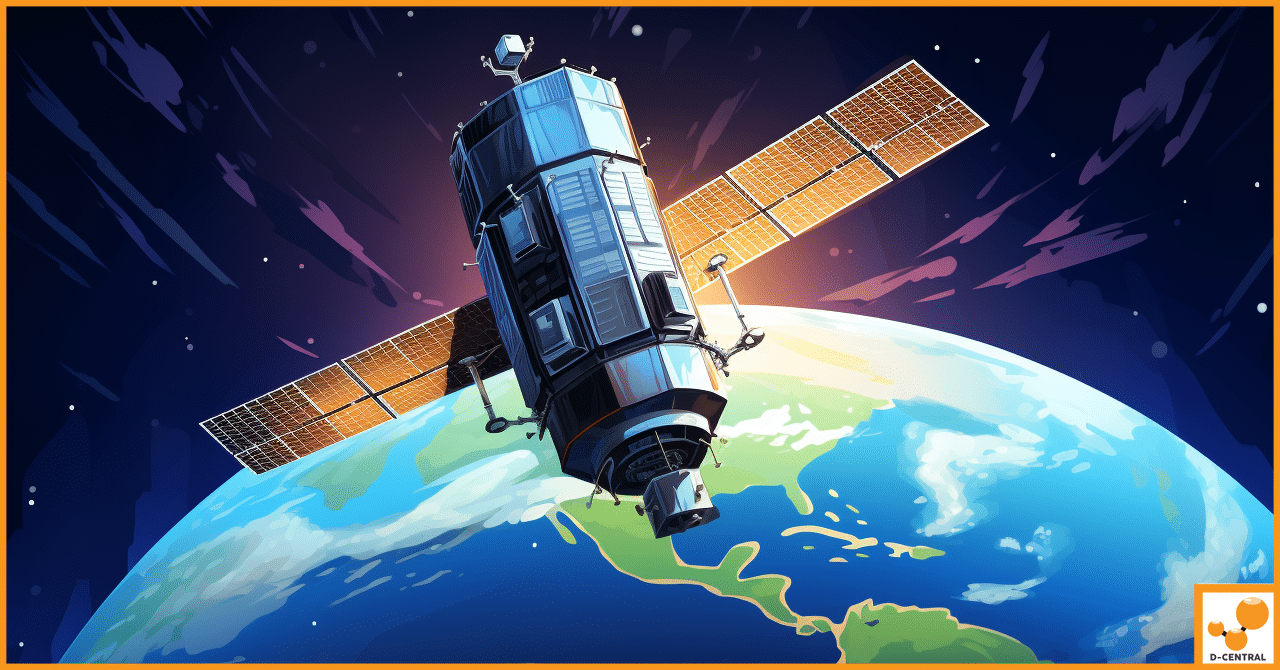
Understanding Bitcoin Zero-Confirmation Transactions
In the rapidly evolving world of digital currencies, Bitcoin stands as a cornerstone, revolutionizing how we perceive and engage with
4479 Desserte Nord Autoroute 440, Laval, QC H7P 6E2

In the world of Bitcoin, ensuring the security, accessibility, and resilience of the network is paramount. This is where Blockstream Satellite comes into play. Blockstream Satellite is a groundbreaking service that broadcasts the Bitcoin blockchain from space, providing a robust complement to terrestrial internet connections. It’s a unique approach to decentralizing the Bitcoin network, making it accessible to people in remote areas or those who can’t afford a reliable internet connection.
Blockstream Satellite exists to address a fundamental challenge in the Bitcoin ecosystem: network accessibility. While Bitcoin has the potential to offer a universal, decentralized currency, its promise can only be fully realized if it’s accessible to everyone, regardless of their geographical location or quality of internet access. By broadcasting the Bitcoin blockchain from space, Blockstream Satellite aims to provide anyone in the world with the ability to access Bitcoin, thereby increasing participation, enhancing the robustness of the network, and promoting financial inclusion.
Moreover, Blockstream Satellite plays a crucial role in the resilience of the Bitcoin network. By providing an alternative method of broadcasting and receiving the Bitcoin blockchain, it mitigates the risk of network interruptions due to internet connectivity issues, censorship, or other forms of interference. This ensures that the Bitcoin network remains operational and secure, even in the face of potential threats to the traditional internet infrastructure.
In essence, Blockstream Satellite is not just a technological innovation; it’s a step towards a more inclusive and resilient Bitcoin network. It embodies the spirit of decentralization that is at the heart of Bitcoin, ensuring that the power of this transformative technology is within reach of everyone, everywhere.
Blockstream Satellite is an innovative service that leverages the power of satellite technology to broadcast the Bitcoin blockchain around the globe. It’s a part of Blockstream’s broader mission to enhance the robustness and global reach of the Bitcoin network.
Blockstream Satellite operates by broadcasting real-time Bitcoin blockchain data from satellites in space to users’ satellite dishes on earth. The system uses a network of geosynchronous satellites that cover most of the populated world, ensuring broad accessibility.
The service works in conjunction with a Bitcoin node, which could be running on a user’s computer. The satellite broadcast is received by a small satellite dish owned by the user, which then feeds the data into the user’s Bitcoin node. This allows the node to stay synchronized with the Bitcoin network without needing a traditional internet connection.
Blockstream Satellite offers several key features:
The Bitcoin data received via Blockstream Satellite is essentially the same as the data received via a regular internet connection. It includes all the transactions and blocks in the Bitcoin blockchain. However, the method of delivery is what sets Blockstream Satellite apart.
While a traditional Bitcoin node receives data from multiple peers over the internet, a node using Blockstream Satellite receives data from a single peer—the Blockstream Satellite network. This doesn’t affect the ability of the node to verify the data; it can still independently validate every transaction and block it receives, ensuring the integrity of the data.
In essence, Blockstream Satellite provides a novel, space-based method of receiving Bitcoin blockchain data, enhancing the accessibility, cost-effectiveness, and resilience of the Bitcoin network.
The Blockstream Satellite Queue is a key component of the Blockstream Satellite service, particularly for users who wish to utilize the Satellite API to broadcast their own custom data.
The Satellite Queue is essentially a waiting line for data transmission requests made through the Blockstream Satellite API. When a user submits a request to broadcast data via the Satellite API, that request is added to the Satellite Queue. The requests in the queue are then processed in order, with each piece of data being broadcasted when its turn comes up.
The operation of the Satellite Queue is based on a simple first-come, first-served principle. When a user submits a data transmission request to the Satellite API, the request is added to the end of the queue. The system then works its way through the queue, broadcasting each piece of data in turn.
The length of time a user’s data will wait in the queue before being broadcasted depends on the number of requests ahead of it in the queue. Users can check the status of the queue via the Blockstream website to get an idea of how long the wait might be.
The Satellite Queue offers several benefits:
In summary, the Blockstream Satellite Queue is a crucial part of the Blockstream Satellite service, ensuring fair, efficient, and predictable access to the Satellite API’s data broadcasting capabilities.
To facilitate the reception of the Bitcoin blockchain broadcast from space, Blockstream offers Satellite Kits. These kits provide all the necessary hardware components for users to set up their own ground station to receive the satellite broadcast.
Blockstream Satellite Kits are designed to provide users with a complete, out-of-the-box solution for receiving the Bitcoin blockchain broadcast from the Blockstream Satellite network. The kits come in different configurations to cater to various user needs and technical competencies.
A typical Blockstream Satellite Kit includes the following components:
The primary use of the Blockstream Satellite Kits is to enable users to receive the Bitcoin blockchain broadcast from the Blockstream Satellite network. This allows users to run a Bitcoin node that stays synchronized with the Bitcoin network without needing a traditional internet connection. It’s particularly useful for users in areas with poor internet connectivity or those who want to enhance the resilience of their Bitcoin node.
In addition to the standard Satellite Kits, Blockstream also offers a Satellite Base Station product. This is a more advanced solution that includes a larger, higher-performance satellite dish and a professional-grade SDR. The Satellite Base Station is designed for users who want to achieve the best possible reception performance, or who wish to use the Blockstream Satellite service for more demanding applications, such as broadcasting their own data via the Satellite API.
In conclusion, Blockstream Satellite Kits and the Satellite Base Station provide users with the hardware they need to tap into the Blockstream Satellite service, enabling them to participate in the Bitcoin network in a robust, independent, and cost-effective manner.
The Blockstream Satellite API is a unique feature of the Blockstream Satellite service that allows users to broadcast their own custom data via the satellite network. This opens up a wide range of possibilities for global data transmission that go beyond the core use case of broadcasting the Bitcoin blockchain.
The Satellite API is a service that allows users to submit their own data for broadcast via the Blockstream Satellite network. The data can be anything that fits within the size and format constraints of the API—text messages, images, or even other types of blockchain data.
The API works on a paid basis, with users paying for their broadcasts in Bitcoin. The payment is made via the Lightning Network, a second-layer solution for Bitcoin that enables fast, low-cost transactions.
Using the Satellite API involves a few steps:
The Satellite API offers several key benefits:
In summary, the Blockstream Satellite API is a powerful tool that extends the capabilities of the Blockstream Satellite service, enabling users to broadcast their own data to a global audience in a resilient, censorship-resistant manner.
Setting up Blockstream Satellite involves both hardware setup, including the installation of a satellite dish and related equipment, and software setup, which includes configuring a Bitcoin node and related software to process the satellite data.
The hardware requirements for setting up Blockstream Satellite include:
The software requirements include:
Here is a basic step-by-step guide on setting up Blockstream Satellite:
In conclusion, setting up Blockstream Satellite involves a combination of hardware installation and software configuration. While the process can be technical, the end result is a robust, independent Bitcoin node that can stay synchronized with the Bitcoin network without needing a traditional internet connection.
Once you’ve set up your Blockstream Satellite, you can start using it to receive the Bitcoin blockchain data and even broadcast your own data. Here’s a detailed guide on how to use Blockstream Satellite.
Running a Bitcoin node using Blockstream Satellite involves receiving the Bitcoin blockchain data broadcasted by the satellite network and feeding it into your Bitcoin node software. Here’s how to do it:
Validating the Blockstream Satellite downlink involves checking that the data you’re receiving from the satellite is correct and hasn’t been tampered with. Here’s how to do it:
Building your own Bitcoin satellite node involves setting up a Bitcoin node that uses Blockstream Satellite to stay synchronized with the Bitcoin network. This process involves both hardware setup and software configuration, as described in the previous sections.
Once your satellite node is set up, you can use it just like any other Bitcoin node—to send and receive transactions, mine blocks (if you have the necessary hardware), and participate in the Bitcoin network. The difference is that your node will be getting its data from a satellite, making it resilient to internet outages and censorship.
In conclusion, using Blockstream Satellite involves running a Bitcoin node that gets its data from space, validating the data you receive to ensure its integrity, and potentially building your own Bitcoin satellite node. It’s a unique way to participate in the Bitcoin network that enhances the network’s resilience and accessibility.
For users who have mastered the basics of using Blockstream Satellite, there are several advanced topics that can further enhance their use of the service. These include using the Satellite API for custom data transmission and cross-verifying Blockstream Satellite data.
The Blockstream Satellite API allows users to broadcast their own custom data via the satellite network. This opens up a wide range of possibilities for global data transmission. Here’s a detailed guide on how to use the Satellite API for custom data transmission:
Cross-verifying Blockstream Satellite data involves checking the data you receive from the satellite against data from other sources to ensure its integrity. Here’s how to do it:
In conclusion, the advanced topics of using the Satellite API for custom data transmission and cross-verifying Blockstream Satellite data can help users make the most of the Blockstream Satellite service, enabling them to broadcast their own data and ensure the integrity of the data they receive.
This guide has provided a comprehensive overview of Blockstream Satellite, a groundbreaking service that broadcasts the Bitcoin blockchain from space. We’ve explored the technology behind it, how to set it up and use it, and delved into some advanced topics for those looking to leverage its full potential.
Blockstream Satellite serves a critical role in the Bitcoin ecosystem. By broadcasting the Bitcoin blockchain from space, it ensures that the network remains accessible, resilient, and inclusive. Whether you’re in a remote area with limited internet access or in a region with internet censorship, Blockstream Satellite ensures that you can participate in the Bitcoin network.
The service also offers cost savings by eliminating the need for a traditional internet connection to download the entire Bitcoin blockchain. Moreover, with the Satellite API, users can broadcast their own custom data, opening up a myriad of possibilities for global data transmission.
In essence, Blockstream Satellite is more than just a technological innovation. It’s a testament to the spirit of decentralization that underpins Bitcoin, ensuring that the power of this transformative technology is within reach of everyone, everywhere.
As we continue to explore the potential of Bitcoin and blockchain technology, services like Blockstream Satellite will play an increasingly important role. They not only enhance the robustness and accessibility of the network but also open up new avenues for innovation and use cases that we are just beginning to imagine.
In conclusion, whether you’re a Bitcoin enthusiast, a developer, or someone interested in the intersection of space and blockchain technology, Blockstream Satellite offers a unique and powerful way to engage with the Bitcoin network. It’s a step towards a future where Bitcoin truly becomes a universal, decentralized currency, accessible to all, regardless of geographical location or quality of internet access.
What is Blockstream Satellite?
Blockstream Satellite is an innovative service that broadcasts the Bitcoin blockchain data from space. This technology not only caters to users in remote locations but also provides a robust backup to terrestrial internet connections thereby decentralizing the Bitcoin network further.
How does Blockstream Satellite Work?
Blockstream Satellite operates by broadcasting a real-time Bitcoin blockchain data from satellites in space to users’ satellite dishes on earth. This system uses a network of geosynchronous satellites that cover most of the populated world, ensuring broad accessibility.
What is unique about the data received from Blockstream Satellite?
The Bitcoin data received via Blockstream Satellite is the same as the data received via a regular internet connection. It includes all the transactions and blocks in the Bitcoin blockchain. The unique part is the mode of delivery, in which a node using Blockstream Satellite receives data from a single peer—the Blockstream Satellite network—a feature enhancing the resilience of the Bitcoin network.
What is the Blockstream Satellite Queue?
The Satellite Queue is a waiting line for data transmission requests made through the Blockstream Satellite API. When a user submits a request to broadcast data via the Satellite API, that request is added to the Satellite Queue. The requests in the queue are then processed in order based on a first-come, first-served principle.
What are Blockstream Satellite Kits?
Blockstream Satellite Kits provide all the necessary hardware components for users to set up their own ground station to receive the satellite broadcast. These include a satellite dish, a Low-Noise Block Downconverter (LNB), a Software-Defined Radio (SDR) Dongle, cables and connectors, and mounting equipment.
What is the Blockstream Satellite API?
The Blockstream Satellite API is a service of the Blockstream Satellite that allows users to broadcast their own custom data via the satellite network. It offers a unique method for global data transmission.
How do you set up Blockstream Satellite?
Setting up Blockstream Satellite involves both hardware setup, including the installation of a satellite dish and related equipment, and software setup, which includes configuring a Bitcoin node and related software to process the satellite data.
DISCLAIMER: D-Central Technologies and its associated content, including this blog, do not serve as financial advisors or official investment advisors. The insights and opinions shared here or by any guests featured in our content are provided purely for informational and educational purposes. Such communications should not be interpreted as financial, investment, legal, tax, or any form of specific advice. We are committed to advancing the knowledge and understanding of Bitcoin and its potential impact on society. However, we urge our community to proceed with caution and informed judgment in all related endeavors.
Related Posts

In the rapidly evolving world of digital currencies, Bitcoin stands as a cornerstone, revolutionizing how we perceive and engage with

In the ever-evolving world of digital finance, Bitcoin emerges as a pioneering force, reshaping our understanding of money and transactions.

In the ever-evolving world of cryptocurrency, Bitcoin mining remains a cornerstone of the network’s functionality and security. However, this critical